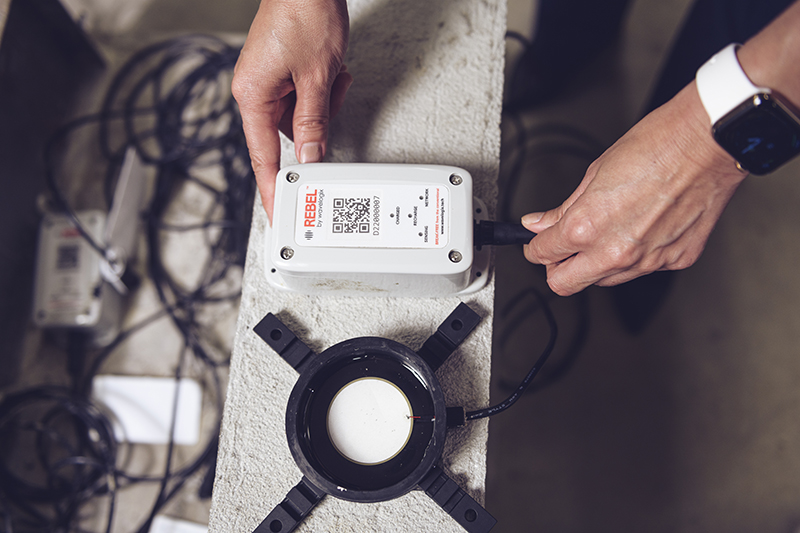2023-08-16 英国・マンチェスター大学

・ マンチェスター大学が、新材料の「StarCrete」を開発。
・ 火星の土の模擬物質(レゴレス)に、結合剤としてジャガイモのスターチ(でんぷん)とひとつまみの塩を混ぜて作製した新材料は、標準的なコンクリートの 2 倍の強度を有し、宇宙環境での建築物構築に最適となる。
・ 新材料の試験では、一般的なコンクリートの 32Mpa の約 2 倍となる 72Mpa の圧縮強度を、月の塵の模擬物質を使用した材料では 91Mpa 超をそれぞれ確認した。
・ 本研究は、宇宙飛行士の血液と尿をバインダーとして使用した過去の材料開発を進展させたもの。この材料では標準的なコンクリートよりも高い約 40Mpa の圧縮強度を確認しているが、宇宙空間のような厳しい環境下での定期的な血液の入手が難点の一つ。 結合剤には宇宙飛行士用の食事として作製されるスターチの利用は合理的。
・ 脱水したジャガイモ(チップス)の大袋(25kg)には、StarCrete のほぼ 0.5 トン分のスターチが含まれ、
213 個超のレンガの材料に相当すると算出(寝室が 3 部屋ある住居には、約 7,500 個のレンガが必要)。
・ また、火星の地表や宇宙飛行士の涙から得られる一般的な塩(塩化マグネシウム)が、StarCrete の強度を飛躍的に向上させる。
・ 宇宙における建築技術開発には長期間がかかり、宇宙探査ミッションのコストや煩雑性を増大させる大量のエネルギーや重機等が必要。新材料の使用によりこれらが不要となり、宇宙探査ミッションをより安価で実施可能なものにする。
・ 次の研究段階では、実験室から実際のアプリケーションへの移行を予定。先般スタートアップのDeakinBio を立ち上げ、地球外環境でも使用できるよう改善策を探求している。
・ 地球での使用では、従来のコンクリートのグリーンな代替にもなる。高温度と大量のエネルギーを要するセメントやコンクリートの製造は、世界の CO2 排出量の約 8%を占める。家庭のオーブンや電子レンジでの調理用温度で作製できるため、エネルギーコストも低く抑えられる。
・ 本研究は、英国研究技術革新機構(UKRI)の一環として、英国工学・物理化学研究評議会(EPSRC)およびバイオテクノロジー・生物科学研究会議(BBSRC)が資金を提供する Future Biomanufactruing Reseach Hub が支援した。
URL: https://www.manchester.ac.uk/discover/news/scientists-develop-a-cosmic-concrete-that-is-twice-as-strong-as-regular-concrete/
<NEDO海外技術情報より>
関連情報
Open Engineering 掲載論文(フルテキスト)
StarCrete: A starch-based biocomposite for off-world construction
URL: https://www.degruyter.com/document/doi/10.1515/eng-2022-0390/html
Abstract
Robust and affordable technology capabilities are needed before a sustained human presence on the lunar and Martian surfaces can be established. A key challenge is the production of high-strength structural materials from in situ resources to provide spacious habitats with adequate radiation shielding. Ideally, the production of such materials will be achieved through relatively simple, low-energy processes that support other critical systems. Here, we demonstrate the use of ordinary starch as a binder for simulated extraterrestrial regolith to produce a high-strength biocomposite material, termed StarCrete. With this technique, surplus starch produced as food for inhabitants could be used for construction, integrating two critical systems and significantly simplifying the architecture needed to sustain early extraterrestrial colonies. After optimisation, lunar and Martian StarCrete achieved compressive strengths of 91.7 and 72.0 MPa, respectively, which is well within the domain of high-strength concrete (>42 MPa) and surpasses most other proposed technology solutions despite being a relatively low-energy process. The flexural strength of the lunar and Martian StarCrete, at 2.1 and 8.4 MPa, respectively, was also comparable to ordinary concrete (2.5–4.5 MPa).



